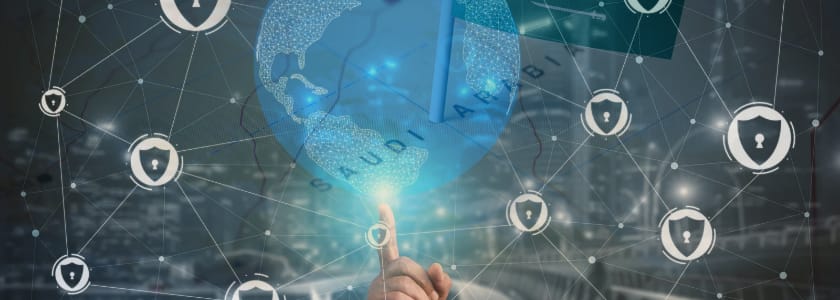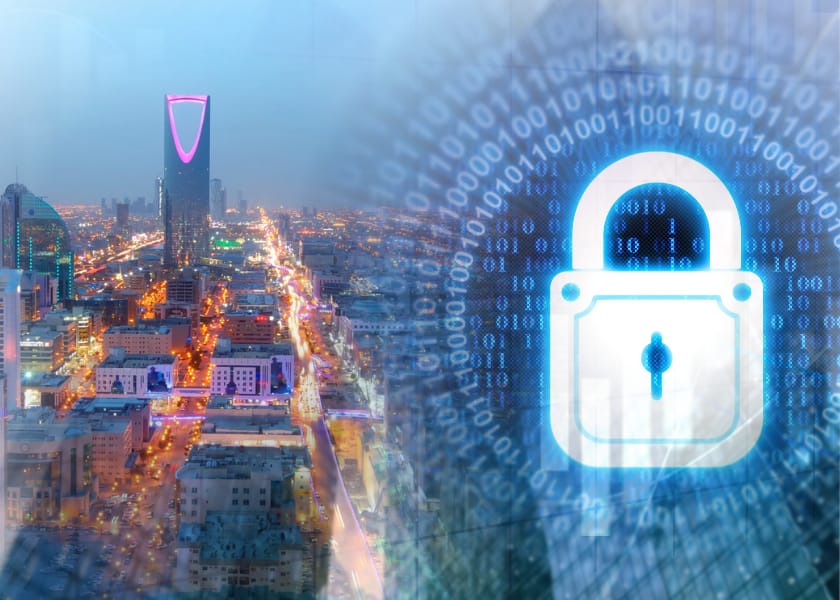Cyber threats are increasing fast, and no sector is more at risk than finance. Therefore, the Saudi Arabian Monetary Authority (SAMA) has taken center stage in securing the nation’s digital defense in Saudi Arabia. So, with its SAMA cyber regulations, the authority is not just managing risk; it’s creating a culture of cyber resilience.
Additionally, from policy enforcement to compliance frameworks, SAMA’s approach is reshaping how the financial sector handles digital threats. Let’s have a look at how SAMA is leading the charge and why it matters more than ever.
How SAMA Cyber Regulations Enhance Finance Sector Security
Business operations today must receive equivalent protection from cyber attackers alongside their technical requirements. Therefore, the Saudi Arabian Monetary Authority executes security enhancement plans across the entire financial industry of Saudi Arabia.
1. Mandatory Compliance Audits
Established financial entities should maintain a continuous program of cybersecurity evaluations. However, audits rely on ISO/IEC 27001 and NIST, together with other international standards for their operation. The reason is that the audits serve as a tool for financial institutions to discover security flaws before security incidents take place, allowing institutions to reinforce their defensive capabilities.
2. Incident Reporting Framework
SAMA requires immediate notification from financial institutions about all cyber incidents that occur in their operations. Therefore, the sector achieves immediate coordinated responses by having one reporting system in place. So, the SAMA uses its framework to obtain information that the institution uses for market trend assessment and regulatory framework updates.
3. Continuous Monitoring
The institutions running financial operations in Saudi Arabia must perform real-time security monitoring as part of a mandatory requirement, and at the same time, share threat intelligence data with SAMA. In addition, the financial institution sector requires a thorough understanding of security protocols and their permanent upgrade maintenance.
SAMA Cyber Regulations Ensure Safe Future
SAMA established the cyber regulations to protect Saudi Arabian banking and finance institutions from rising cybersecurity risks. The regulatory measures work to create standard cybersecurity norms for every financial institution supervised by SAMA.
Why Were These Regulations Necessary?
Over many years, Saudi Arabia has been exposed to sophisticated cyberattack methods. So, the digital economic growth, along with the Vision 2030 financial innovation initiative, made Saudi Arabia an attractive target for attackers. Therefore, SAMA demonstrated proactive action by identifying early on the rising threat to financial institutions. So, financial institutions under SAMA supervision must demonstrate both regulatory compliance and organizational resilience according to the established regulations.
What do SAMA Cyber Regulations Include?
SAMA’s framework covers:
- Governance and risk management
- Cybersecurity roles and responsibilities
- Incident response and recovery planning
- Secure application development
- Data protection and monitoring
By enforcing these rules, SAMA is ensuring that cyber resilience isn’t optional—it’s a necessity.
SAMA’s Cyber Governance Framework
SAMA has made cyber governance its prominent feature in its efforts. The key elements go beyond technological tools because they require both human elements and organizational processes alongside strong leadership across the organization.
1. Creating a Cyber-Resilient Culture
SAMA promotes organizations to implement a cybersecurity culture, which should begin with executive support. Therefore, boards, along with executives, now operate with the duty to handle cybersecurity program responsibilities. Additionally, proper funding and staff training, and evaluation requirements become essential for board members and executives to fulfill.
2. Role-Based Accountability
Every employee in the organization receives a specified cybersecurity role, beginning with the CIO and extending through system administrators. In this way, the boosted clarity enables organizations to react quickly and prevent cyber threats more effectively.
3. Integration with National Strategies
The regulatory framework established by SAMA operates independently from other organizational systems. Their initiatives support both the national programs of the Saudi National Cybersecurity Authority and Vision 2030. Therefore, the combined strategy unites all sectors, including government and finance, with private entities.
Impact of SAMA’s Cyber Policies
- A Stronger Defense Posture
- Banks report better threat detection and fewer breaches since SAMA’s regulations.
- Additionally, Many use AI-based tools to monitor threats around the clock.
- These tools stop attacks before they cause harm.
- Overall, financial institutions now have faster and stronger defenses.
- Improved International Confidence
- Global investors now trust Saudi Arabia’s financial sector more.
- Strong data protection boosts investor confidence.
- It helps build new partnerships and attract foreign investments.
- Furthermore, this also aligns with Saudi Arabia’s goal to be a global economic hub.

Challenges in Adapting to the New Norm
Adopting SAMA cyber regulations hasn’t been a walk in the park for every financial institution. Here are the main challenges:
- High Costs for Smaller Institutions: Smaller banks and fintech startups often face budget constraints. Therefore, implementing security tools, hiring experts, and conducting training can be financially draining.
- Shortage of Cyber Talent: There’s a national gap in skilled cybersecurity professionals. Even with solid regulations, execution is tough without the right talent in place.
- Continuous Updates: However, cyber threats evolve rapidly, and they require constant updates. Therefore, IT teams are pressured to stay compliant while adapting to frequent changes in systems and protocols.
SAMA’s Next Steps in Strengthening Saudi Cybersecurity
SAMA isn’t stopping here. Its vision goes beyond defense, it’s about future-proofing the finance sector.
1. Encouraging Innovation in Cyber Defense
New technologies like AI, machine learning, and blockchain are being explored to strengthen cybersecurity even further. Additionally, the SAMA supports these innovations through partnerships with fintech hubs and tech startups.
2. Cross-Border Collaboration
Cyber threats don’t care about borders. That’s why SAMA is collaborating with international financial regulators and cybersecurity agencies to share intelligence and best practices.
3. Ongoing Public Awareness
SAMA also focuses on increasing public awareness. After all, even the best security systems can’t prevent attacks caused by careless clicks or weak passwords.
Conclusion
The Saudi Arabian Monetary Authority has established a model for enhancing cyber resilience throughout Saudi Arabia that serves as an example for global nations. Additionally, the SAMA cyber regulations provide Saudi Arabia with more than mere standards because they represent a substantial organizational philosophy.
Through their efforts, SAMA has developed superior standards and trust-based financial regulations, which put Saudi Arabia’s financial sector among the top secure in the Middle East.
Sure, there are challenges ahead. The Kingdom shows strong signs of achieving digital safety through proper governance structures, established frameworks, and innovative strategic planning.






